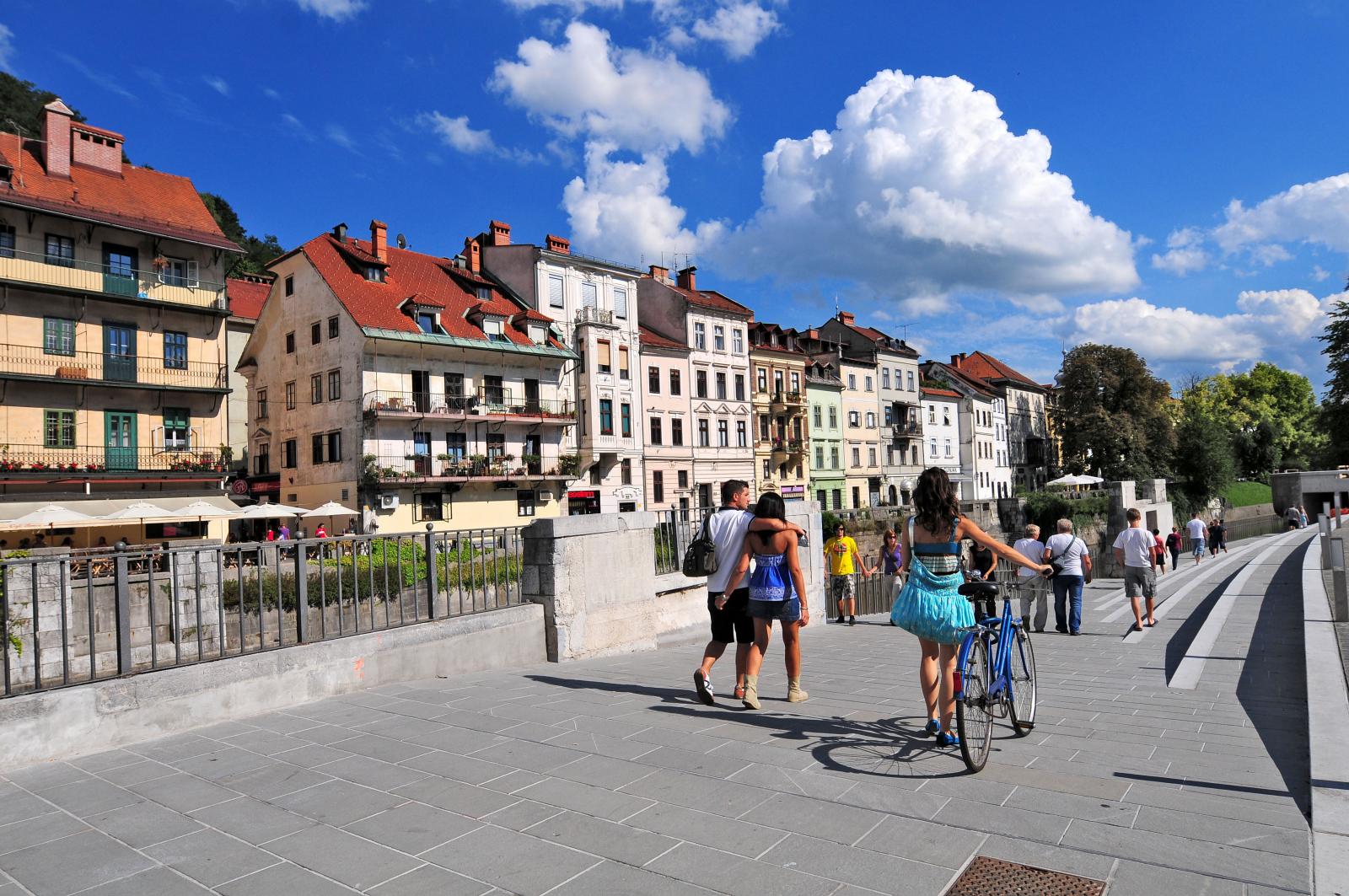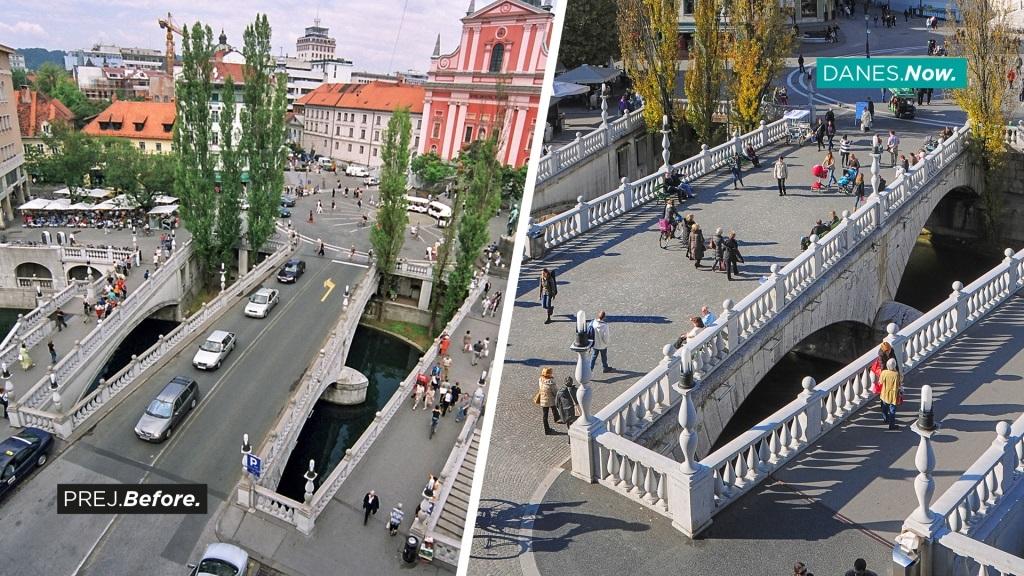The first " ecological zone" in Ljubljana was established in 2007 in the old city centre. This led to the closure of a 100,000 m² area to motor vehicles, and the renovation of the main traffic axis to make it attractive for pedestrians and cyclists. The new transport regime in this area reduced black carbon levels by 58%. Additionally, the city administration has planted 63 ash trees. Biking and sustainable mobility have been promoted, in line with providing new green areas for social and sporting activities in formerly degraded areas. The "renaissance“ is not focused only on the city center and the implementation of the car-free zone, but it is expanded throughout Ljubljana and covers different fields, such as the revival of degraded areas, the establishment of green public spaces, playgrounds for children, eco-renovation of schools and kindergartens, cultural and sports facilities, etc. Finally, the river Ljubljanica has been the focus of an ecological restoration project. This was done with the aim of reducing pollution and returning the city centre to the citizens, by incentivizing pedestrian and bicycle commute. The "ecological zone" project has been completed. After the completion of the project, further initiatives were taken which is directly related to the project itself. Some of them focusing on converting the city to a sustainable one is still going on. (1, 3, 4 and 8).
Overview
Nature-based solution
- Grey infrastructure featuring greens
- Alley or street trees and other street vegetation
- Parks and urban forests
- Pocket parks/neighbourhood green spaces
Key challenges
- Climate action for adaptation, resilience and mitigation (SDG 13)
- Climate change adaptation
- Climate change mitigation
- Green space, habitats and biodiversity (SDG 15)
- Green space creation and/or management
- Environmental quality
- Air quality improvement
- Noise reduction
- Regeneration, land-use and urban development
- Regulation of built environment
- Promote natural styles of landscape design for urban development
- Health and well-being (SDG 3)
- Improving physical health
Focus
Project objectives
Implementation activities
Climate-focused activities
Climate change adaptation:
- Increase or improve urban vegetation cover to help reduce outdoor temperature
- Create or improve outdoor spaces to help people escape from urban heat
Climate change mitigation:
- Increase green urban nature for carbon storage (wetlands, tree cover)
- Invest in public transport/bicycle infrastructure as a means to prevent car use
- Raise public awareness of behaviours, lifestyle and cultural changes with mitigation potential
Main beneficiaries
- Citizens or community groups
Governance
Management set-up
- Government-led
Type of initiating organisation
- National government
- Local government/municipality
Participatory approaches/ community involvement
- Dissemination of information and education
- Consultation (e.g. workshop, surveys, community meetings, town halls)
Details on the roles of the organisations involved in the project
Project implemented in response to ...
Financing
Total cost
Source(s) of funding
- Public national budget
- Public regional budget
Type of funding
- Earmarked public budget
Non-financial contribution
- Provision of labour
- Public authorities (e.g. land, utility services)
Impacts and Monitoring
Environmental impacts
- Climate change
- Lowered local temperature
- Reduced emissions
- Enhanced carbon sequestration
- Environmental quality
- Improved air quality
- Reduced noise exposure
- Green space and habitat
- Promotion of naturalistic styles of landscape design for urban development
- Increased green space area
Economic impacts
- More sustainable tourism
Socio-cultural impacts
- Social justice and cohesion
- Improved liveability
- Health and wellbeing
- Improved physical health
- Improved mental health
Type of reported impacts
Presence of formal monitoring system
Presence of indicators used in reporting
Presence of monitoring/ evaluation reports
Availability of a web-based monitoring tool
References
2. Biodiversity Information System for Europe, Green Infrastructure in Slovenia. available at Source link. accessed on 2nd November, 2020.
3. European Green Capitals - Air Quality information. (2014) available at Source link. accessed on 2nd November, 2020.
4. Green Ljubljana. (2016) ECOLOGICAL ZONE More space and safety for pedestrians and cyclists. available on Source link [site under construction as on 2nd November, 2020]
5. Oppla. (2016) Ljubljana Case Study. available on Source link [not accessible due to privacy issue]
6. Sustain Europe. (2016) Going Green. available at Source link. accessed on 2nd November, 2020.
7. Gotovac, A.S. and Kerbler, B. (2019) From Post-Socialist to Sustainable: The City
of Ljubljana. Sustainability. available at file:///Users/rm/Downloads/Source link . accessed on 2nd November, 2020.
8. Cities Territories Governance (2019) Ljubljana - The balance between nature and the city: Assessment of the territories’ climate action. available at Source link. accessed on 2nd November, 2020.
9. Source link (n.d.) Ljubljanica connects - Restoration of the Ljubljanica River corridor and
improvement of the river’s flow regime. available at Source link. accessed on 2nd November, 2020.


